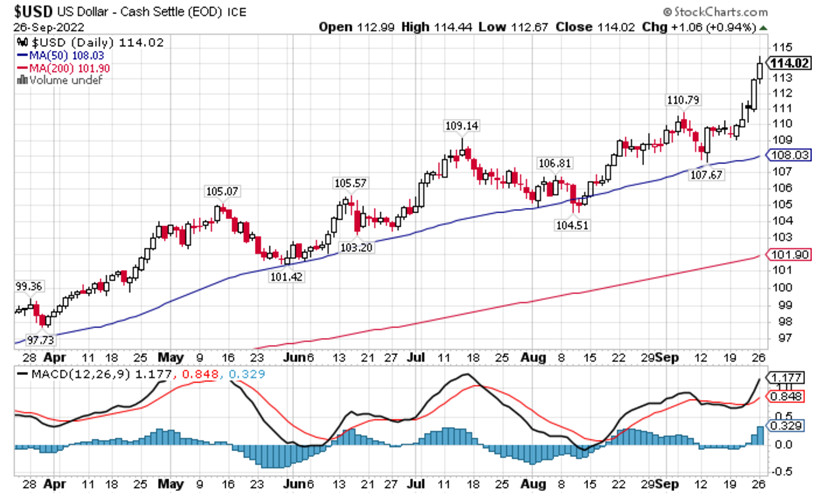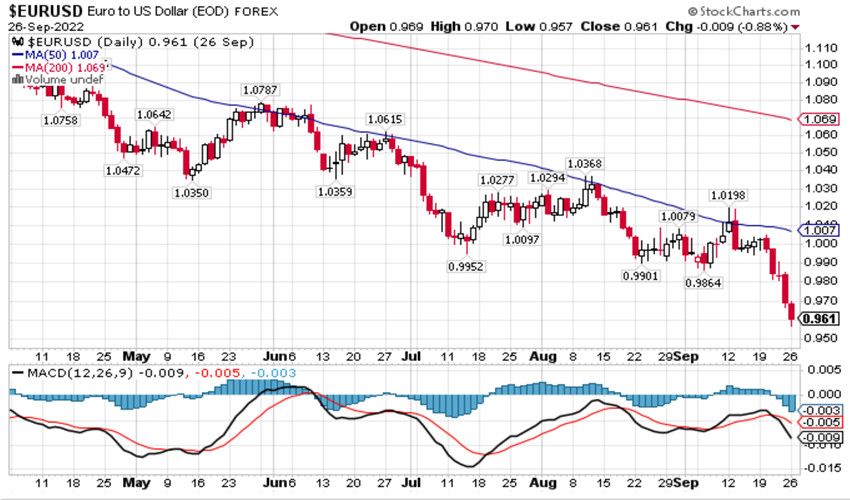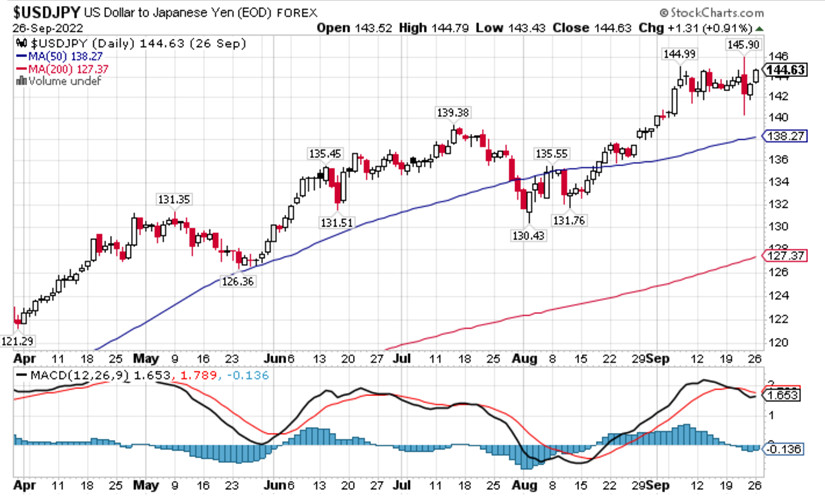Hello, dear colleagues.
The main event in September was an increase in the federal funds rate by 0.75%. Commenting on this decision, adopted unanimously, Federal Reserve Chairman Jerome Powell said that the US central bank is ready to continue raising rates until inflation starts to decline and the Committee receives data on the sustainability of the decline in inflation expectations.
A few days later it became clear that the decision taken by the Open Market Committee could lead to serious, if not catastrophic, consequences for the entire global financial system and its most important element — the FOREX market.
Before discussing the prospects of foreign currencies against the US dollar, let's discuss why a rate hike leads to a rise in the dollar and a decrease in the rates of its competitors?
The answer to this question lies in one of the fundamental laws of the foreign exchange market — the Interest Rate Parity Theorem. The essence of the theorem is that assets with the same credit risk will be more attractive in the currency of the state where the rate is higher. In this case, investors will sell the currency with lower rates and buy the currency with higher rates in order to receive a large premium for their investment.
Figure 1: The US dollar exchange rate against a basket of foreign currencies
The increase in the dollar rate primarily hit currencies with low rates, including, first of all, the euro, the yen and the British pound, and this is the flip side of the US dollar. Moreover, if the yen and the pound have limited influence, then the euro is the second most important reserve currency in the world.
The economic problems associated with rising energy prices have further aggravated the situation in the eurozone economy, and the slowness of the European Central Bank has led to the fact that the difference in interest rates has become large enough for a massive outflow of capital from Europe. This has become especially relevant for energy-dependent industries, such as metallurgical companies and aluminum production.
At the same time, the situation in the British pound and the Japanese yen is no better than that of the euro, and even worse in some ways. The British pound updated the historical low on September 26. The yen updated the 30-year low a little earlier. There is another circumstance that puts pressure on exchange rates, this is the decline of the US stock market, which adds an additional growth driver to the dollar. Thus, the dollar is at the peak of its power in relation to the currencies of the bloc.
The Chinese yuan is also under pressure, although much less than the nearest US satellites. This week, the yuan has updated the low and is now trading at 7.14 yuan per dollar, but the level of 8 yuan per dollar, the low from 2006, is still far away. The depreciation of the yuan is rather a forced measure in response to the decline in the currency of the main competitor in the Asia-Pacific region — the Japanese yen.
Further narration requires answering the question of how high the US dollar can grow, and whether it is worth selling it against other currencies now. First of all, it should be noted that the dollar's growth is not over yet, although it has achieved its initial goals. At the same time, it should be remembered that the movement never develops in a straight line, and the dollar has now turned out to be sufficiently overbought to make a correction to its rising trend from a technical point of view, which will give us the opportunity to consider buying it, if, of course, there is a desire and, most importantly, a signal from the trading system.
However, in the context of what is happening, a very significant reservation should be made. Even if we assume that the US dollar has reached its high, it will take at least three months to reverse it. Now the ECB and the Bank of England have rushed after the Fed, trying to somehow stop the inflationary spiral. However, it is not so easy to do this, given the pace set by the US Fed, and it takes time.
The chronology of events can be presented as follows. The Fed will raise the rate at least once more at its next meeting, which will be held on November 1 and 2, by 0.75% points. Before this event, the ECB will also raise the rate by 0.75% at the end of October, thereby keeping the difference in rates between the euro and the dollar at the current value. Of course, the ECB may surprise and raise the rate by 1% at once, but then we will know about it in advance from the comments of officials, but now such an increase looks unlikely.
Based on the logic of this assumption, it is safe to say that at least until the end of October 2022, the euro's exchange rate will not change its direction and may continue to decline.
Fig.2: Technical picture of the euro/US dollar exchange rate
The technical picture of the EURUSD exchange rate assumes a similar dynamics and now completely coincides with the fundamental calculations (Fig.2). The euro is in a downward trend. At the same time, the exchange rate reached the first target, located at 0.96, which was determined by the width of the previous range of 0.99-1.02, 300 points. It is logical to assume that after achieving the first goal, the course will grow a bit, or, in other words, go into correction.
The main postulate of technical analysis is the rule: the movement will continue until we get the opposite. This means that we need to assume that the exchange rate of the euro will decline until the condition of a trend change is met. For the current situation, the condition for a trend change is an increase above the 1.02 level, before that, any increase in the EURUSD rate should be considered as a correction to the current downward trend.
Fig.3: Technical picture of the USDJPY course
In my subjective opinion, the situation in the Japanese yen is even sadder than with the euro. The Bank of Japan remains the only key central bank that has abandoned the policy of raising rates. This has a rather serious impact on the yen exchange rate, which leads to the fact that the BOJ, under pressure from allies dissatisfied with the devaluation, is even forced to intervene. However, this does not help much and may lead to the fact that the Japanese currency will test the level of 150 and even 155 yen per US dollar (Fig.3).
Therefore, if any feeling that you take for intuition suggests that you sell the USDJPY pair here and now, then throw this thought out of your head. It will not lead to anything good. It will be possible to do this no earlier than the pair drops below the 140 level, and even then with great caution and a minimum lot size.
With the British pound, everything is somewhat more complicated. The fact is that the BoE began to raise the rate earlier than the ECB began to do it, besides, the maintenance of the national currency rate is written in its charter. Previously, if necessary, the central bank did not disdain to resort to interventions, including not only verbal ones. Therefore, I wouldn't guess the depths at the level of parity of the pound and the dollar, although such a decline looks quite likely.
Summing up, it should be noted that the US dollar continues to remain in an upward trend, supported by high interest rates and a decline in stock indices. The S&P 500 index updated the local low on Tuesday, September 27. The previous level was at 3631. If the month, quarter and fiscal year are closed below the 3600 mark, the fate of the US market in the 4th quarter will be very sad. With a high degree of probability, of course. Be careful, cautious and most importantly — follow the rules of money management!

























